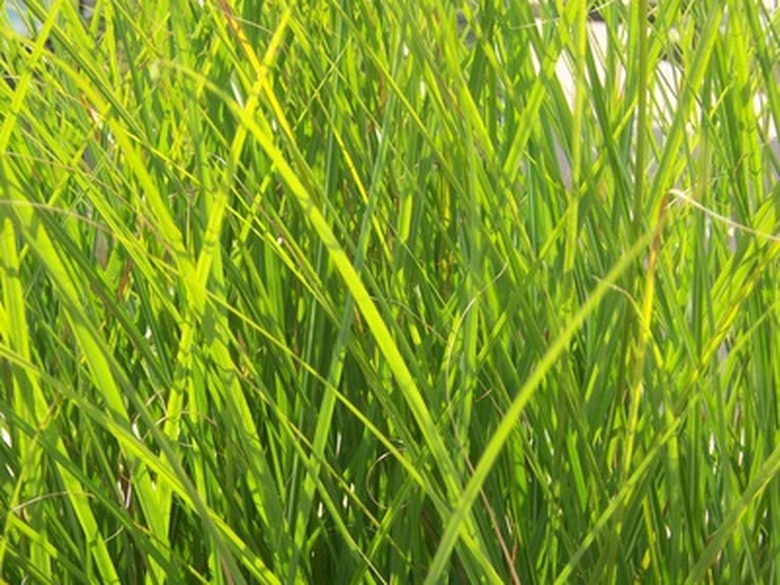How To Kill Cooch Grass
Things Needed
- Lawnmower
- Spade
- Artist's paint brush
- Glyphosate
Cooch (or couch) grass, also known as quackgrass, is an extremely invasive weed that, once established, can quickly overrun a lawn or a garden, crowding out all other vegetation. Cooch grass can spread by seeds, but its primary means of overrunning your yard is through rhizomes–underground roots that can quickly grow to enormous lengths and sprout new weeds almost anywhere in your yard. Unless you catch cooch grass when it first begins to grow, expect a long and hard battle to regain control of your property.
Step 1
Mow areas of cooch grass down to 1 inch. This will not kill the grass, but it will prevent it from producing seeds. The seeds are viable up to 5 years, so it is important not to have cooch grass seeds in the ground, waiting to germinate, after the cooch grass itself has been eliminated.
Step 2
Use a spade to dig up the cooch grass. This is a difficult process; you must dig down approximately 6 inches and then dig laterally for several feet, following the 1/8-inch-thick white cooch grass roots (rhizomes) that must be removed. Be careful not to cut or break the rhizomes; each will produce new cooch grass plants.
- Cooch (or couch) grass, also known as quackgrass, is an extremely invasive weed that, once established, can quickly overrun a lawn or a garden, crowding out all other vegetation.
- The seeds are viable up to 5 years, so it is important not to have cooch grass seeds in the ground, waiting to germinate, after the cooch grass itself has been eliminated.
Step 3
Fertilize the cooch grass with a good lawn fertilizer with lots of nitrogen. This will encourage new cooch grass shoots to grow.
Step 4
Wait seven days for the new cooch grass sprouts to show themselves. Spray the cooch grass shoots with an herbicide that contains glyphosate if this can be done without killing other vegetation that you wish to keep. Do not spray glyphosate if there is any wind and to not spray it if rain is expected within 24 hours..
Step 5
Paint each leaf of the cooch grass with an artist's paint brush dipped in glyphosate if it is not possible to spray the glyphosate without killing other plants. This is a tedious process, but it is the best way to kill this unwanted weed without harming your other plants or grass.
- Fertilize the cooch grass with a good lawn fertilizer with lots of nitrogen.
- Do not spray glyphosate if there is any wind and to not spray it if rain is expected within 24 hours..
- Paint each leaf of the cooch grass with an artist's paint brush dipped in glyphosate if it is not possible to spray the glyphosate without killing other plants.
Step 6
Wait 24 hours for the glyphosate to work its way through the cooch grass and then water as usual. Keep an eye out for any new cooch grass and immediately paint glyphosate on new leaves of cooch grass as they sprout. This can be a long battle; rhizomes may continue to sprout for several months, and seeds can sprout up to five years after you have killed the last of the cooch grass plants.
Tip
Do not get glyphosate on the leaves of any plants you do not wish to kill; it is a non-discriminate herbicide that kills virtually all vegetation it touches.
Warning
Never hoe or rototill cooch grass–each broken piece of root that is left in the ground will sprout a new plant.
